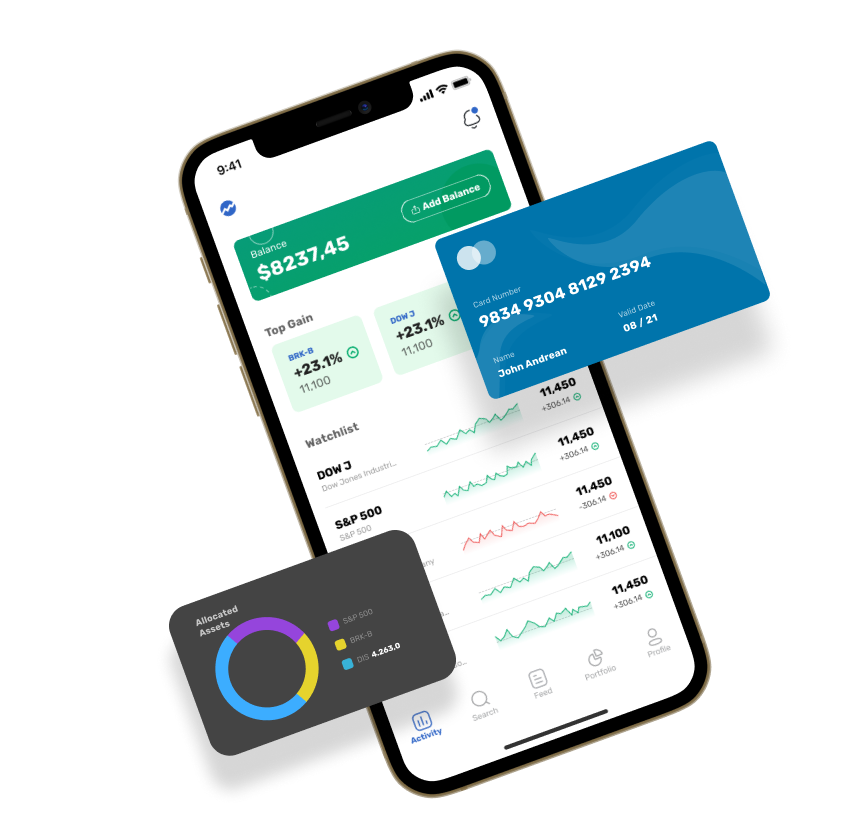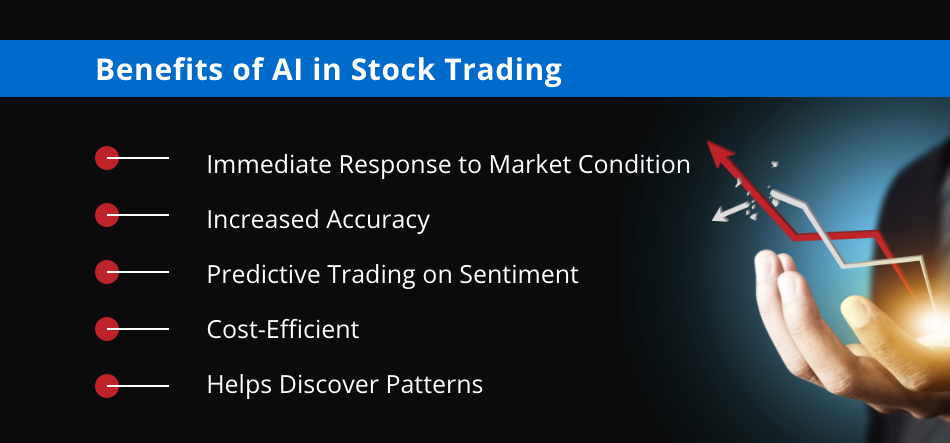20 Free Info For Choosing AI Stock Predictions Platform Websites
20 Free Info For Choosing AI Stock Predictions Platform Websites
Blog Article
Top 10 Tips On How To Evaluate The Accuracy And Performance Of Ai Platforms For Predicting And Analysing Stocks
To ensure that you are making use of a platform that is that can provide reliable predictions and insights, it is important to test the accuracy and efficiency of AI stock-predicting and analysis platforms. Here are the top 10 methods to evaluate these platforms.
1. Backtesting Results
What to Look for: Check if the platform provides backtesting capabilities to evaluate how its predictions would have performed on historical data.
What is the importance of backtesting: It allows you to verify the accuracy of an AI model. You can do this by comparing predicted results with actual historic results.
Tip: Choose platforms that let you customize the parameters for backtesting (e.g. time intervals or asset types).
2. Real-time Performance Monitoring
What to look out for: See the response of the platform in market conditions in real-time.
What is important Real-time performance of an application is a more precise indicator than past backtesting.
TIP: Watch real-time forecasts and compare them to market developments with a demo or trial for free.
3. Prediction Error Metrics
What to look for Analyze metrics like Mean Absolute Error (MAE), the Root Mean Squared Error (RMSE), or R-squared to quantify the accuracy of predictions.
Why it is Important : These measures provide a quantitative way to gauge how closely predictions are to actual results.
Tips: Platforms that openly disclose these measures are more transparent.
4. Winning Rate and Success Ratio
What to look out for: Examine the platform's win rate, which is the percentage of forecasts that are right. Also, look at its success ratio (the profitability of trades made using the predicted outcomes).
Why is it important: High success rates and win rates suggest better accuracy in predicting and greater chances of earning.
Tip: Be cautious of sites that advertise untrue win rates (e.g. 90, 90 %+), because no system is perfect.
5. Benchmarking Market Indices Against Benchmarks
What to look out for See if you can compare platform predictions and results to important indexes (e.g. S&P 500, NASDAQ).
Why It Matters This will help determine whether the platform outperforms or is underperforming the market in general.
Tips: Don't just focus on short-term gains, but also an overall performance that is consistent over a longer time.
6. Consistency in Market Conditions
What to look out for What is the performance of the platform when there are various market conditions.
What is the significance of it A strong platform works well in all markets, not just those that are in good conditions.
Check out the predictions of the platform in turbulent markets or during market declines.
7. Transparency in Methodology
What to look for What to look for: Learn AI algorithms and models (e.g. reinforcement learning or neural networks).
Transparency of the methodology can be used to evaluate the scientific rigor and reliability of the platform.
Beware of platforms that use a "black box" model that does not explain the method of generating predictions.
8. User Reviews and Tests by Independent Parties
What to Look For When Choosing a Platform: Read the reviews of users, and look for independent tests or third-party assessments.
Why it is important The independent test results and reviews provide objective insights on the platform's accuracy and performance.
Tips: To learn what other users are saying about the service, visit forums such as Reddit copyright, and financial blogs.
9. Risk-Adjusted Returns
What to look out for What to Look For: Assess the platform's performance with risk adjusted metrics like Sharpe Ratios, or Sortino Ratios.
Why It Matters : These metrics are based on the degree to which risk is taken in order to earn returns. This gives the most complete view of the performance.
Sharpe Ratio is a good indicator of the risk-adjusted return.
10. Long-term record-breaking records
What to look for: Determine the overall performance of the platform over the period of time (e.g. 3 to 5 years).
Why It Matters: Long-term results are a better measure of reliability than short-term results.
Avoid platforms which only show short-term results or cherry-picked success.
Bonus Tip: Make use of a Demo Account to test.
Demo accounts and free trials allow you to check the accuracy of the prediction system in real time, without the risk of putting your money at risk. You can evaluate the accuracy and efficiency of the platform first-hand.
Follow these tips to thoroughly evaluate the accuracy, performance and reliability of AI stock prediction and analysis platforms. You can then choose a platform that best aligns with your goals for trading and risk tolerance. Be aware that no trading platform is perfect, and the best strategy is to combine AI insight with your own personal analysis. View the most popular ai for stock trading hints for blog advice including best ai for trading, ai stock market, ai trading, ai stock, ai stock trading, investing ai, using ai to trade stocks, trading ai, ai stock picker, stock ai and more.
Top 10 Tips For Evaluating The Risk Management Of Ai Stock Forecasting/Analyzing Trading Platforms
Any AI stock-predicting/analyzing trading platforms must include risk management which is vital for protecting your investment and minimizing losses. A platform with strong risk management tools will help you navigate uncertain markets and make educated decisions. Here are 10 suggestions on how you can evaluate the capabilities of the platform's risk management tools.
1. Study Stop-Loss Features and Take Profit Features
Customizable levels - Make sure that the platform allows you to modify your stop-loss, take-profit and profit level for every strategy or trade.
Trailing stops: Check if your platform supports trailing stops, which automatically adjust as the market changes in your favor.
If the platform has the option of a stop-loss order that guarantees your trade is closed at the amount specified in markets that are volatile, you can be confident of a successful trade.
2. Effective Tools to Assess Position Size
Fixed amount: Make sure the platform permits you to establish the size of a position based upon an amount that is fixed in monetary terms.
Percentage in your portfolio The best way to manage your risk by setting positions sizes in proportion to per percentage.
Risk-reward-ratio: Verify whether the platform lets users define their own risk/reward ratios.
3. Look for Diversification Support
Multi-asset Trading to diversify your investment portfolio, ensure that the trading platform you select allows trading across multiple asset classes.
Sector allocation: Determine whether your platform offers tools to manage and monitor the exposure of your sector.
Geographic diversification: Check if the platform you trade on has international markets available in order to spread risk across different geographical areas.
4. Review margin and leverage controls
Margin requirements. Make sure you know the requirements for margin prior to trading.
Find out whether you can establish leverage limits in order to limit risk exposure.
Margin calls: Check if the platform provides timely margin call notifications to prevent account liquidation.
5. Assessment and Reporting of Risk
Risk metrics: Ensure the platform has key risk metrics (e.g. Value at Risk (VaR), Sharpe ratio drawdown, Sharpe ratio) to your portfolio.
Scenario analysis: Ensure that the platform is able to create different scenarios for the market to determine the risk.
Performance reports: Determine if you can get detailed performance reports through the platform, which include risk-adjusted results.
6. Check for Real-Time Risk Monitoring
Monitoring of your portfolio: Make sure your platform permits you to monitor your portfolio in real time.
Alerts: Check if you receive real-time alerts for associated with risk (e.g. Stop-loss triggers, breach of margins).
Check for customizable dashboards that provide a comprehensive overview of your risk profile.
7. How to evaluate the results of Stress Testing and Backtesting
Stress testing. Make sure your platform permits you to stress test your portfolio or strategy under extreme market conditions.
Backtesting. Check whether the platform supports backtesting. This is the use of historical data to assess the risk and the performance.
Monte Carlo Simulators: Verify whether the platform uses Monte Carlo models to model potential outcomes and determine the risk.
8. Risk Management Regulations - Assess the Compliance
Regulatory compliance: Verify that the platform complies with relevant risk-management regulations (e.g. MiFID II, Reg T, in the U.S.).
Best execution: Verify that the platform adheres with the best execution practices. Trades will be executed at the lowest price possible to minimize slippage.
Transparency - See whether the platform has disclosed risks in a clear, transparent way.
9. Look for risk parameters that are user-controlled
Custom risk rules for your business - Make sure that the platform allows the user to set up your own risk management guidelines.
Automated controls for risk You should check if your platform can implement risk management policies upon the parameters you've established.
Manual overrides Check if you can manually override the automated risk control in the event of an emergency.
Reviews of User Feedback and Case Studies
User reviews: Examine feedback from users and evaluate the effectiveness of the platform's the management of risk.
The case studies or testimonials must highlight the platform’s capability to mitigate risks.
Community forums: Find out if a platform has members who are willing to share their strategies and tips for managing risks.
Bonus Tips
Trial period: Use the demo or trial version for free to test the platform's risk management features in real-world scenarios.
Support for customers: Make sure the platform provides a solid support regarding risk management related issues or questions.
Educational resources: Determine if you can find any educational materials on the best practices for managing risk.
By following these tips and techniques, you will be able to assess the potential risk managing capabilities of AI platform for analyzing and predicting stocks and ensure you select one that will to protect your capital and limit possible losses. Risk management tools that are durable are essential for trading in unstable markets. See the recommended ai stock analysis hints for website examples including investing with ai, ai stock prediction, can ai predict stock market, free ai tool for stock market india, stock predictor, ai stock analysis, best stock prediction website, ai options, ai software stocks, ai stock investing and more.